Welcome to our free classical music site

Do you write about classical music? Are you a blogger? Want to team up with Classical Connect? Send us a message, let's talk!

Do you write about classical music? Are you a blogger? Want to team up with Classical Connect? Send us a message, let's talk!
September 18, 2017. Čiurlionis. Here’s a composer whom we’ve managed to overlook all these years: Mikalojus Čiurlionis. He’s celebrated in Lithuania the way Smetana and Dvořák are celebrated in the Czech Republic – as a national composer. But he was more than that, he was also a very interesting painter. Čiurlionis was born onSeptember 22nd of 1875 in the south of Lithuania, in a village of Senoji Varėna which was then part of the Russian Empire. Though Lithuanian by nationality, the family’s language was Polish, as was customary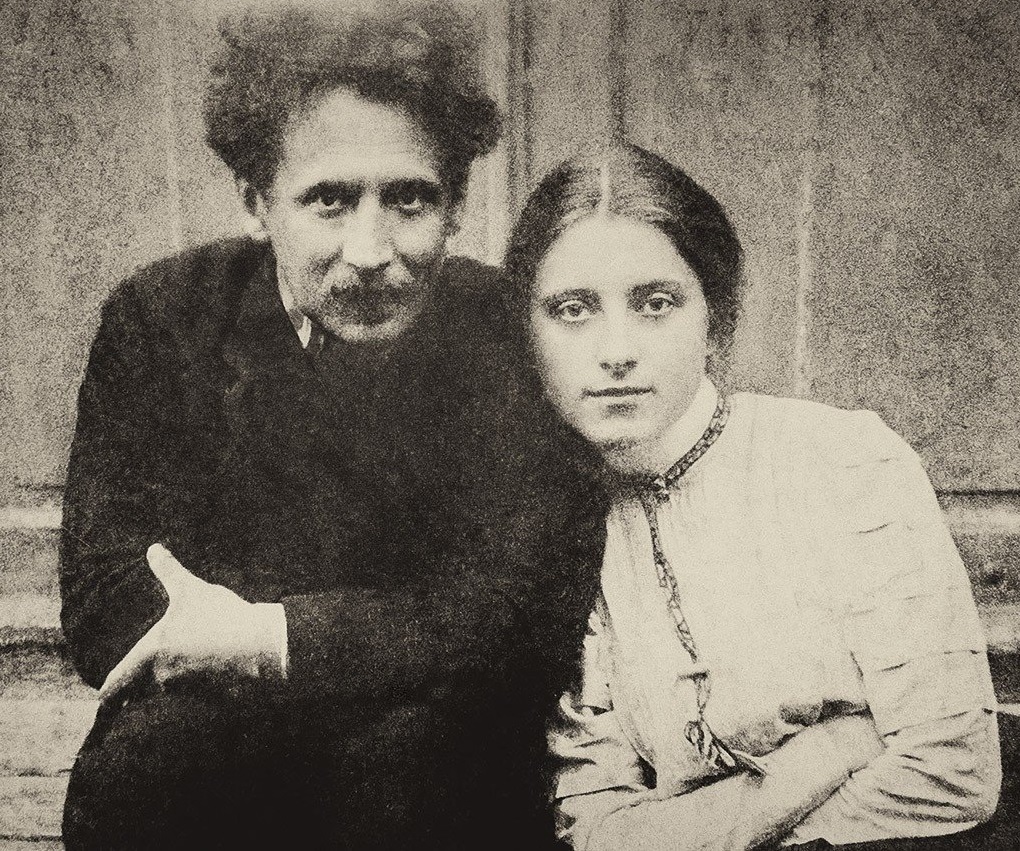 with the educated Lithuanians of that time (the upper-class Russians used to speak better French than Russian). The triad of cultures, Lithuanian, Polish and Russian was to influence Čiurlionis’s life and creative development. When Mikalojus was two, the family moved to Druskininkai, a pretty spa town on the river Neman. There his father worked as a church organist. Musically talented, Mikalojus started playing piano by ear at the age of four and could fluently read music at seven. In 1889, he was sent to a music school in the town of Plungė. The school was established by Prince Michał Ogiński, a Polish nobleman and diplomat, who served as a Senator to Czar Alexander I of Russia. Ogiński was also an amateur composer, the author of the so-called Oginski Polonaise, very popular in Russian and Poland. On a scholarship Mikalojus was sent to the Warsaw Conservatory, where he studied for five years, from 1894 to 1899. Čiurlionis started seriously composing around 1900. He briefly studied at the Leipzig Conservatory, but by 1902 was back in Warsaw. It was there that he started painting and two years later entered the newly-established Warsaw School of Fine Arts.
with the educated Lithuanians of that time (the upper-class Russians used to speak better French than Russian). The triad of cultures, Lithuanian, Polish and Russian was to influence Čiurlionis’s life and creative development. When Mikalojus was two, the family moved to Druskininkai, a pretty spa town on the river Neman. There his father worked as a church organist. Musically talented, Mikalojus started playing piano by ear at the age of four and could fluently read music at seven. In 1889, he was sent to a music school in the town of Plungė. The school was established by Prince Michał Ogiński, a Polish nobleman and diplomat, who served as a Senator to Czar Alexander I of Russia. Ogiński was also an amateur composer, the author of the so-called Oginski Polonaise, very popular in Russian and Poland. On a scholarship Mikalojus was sent to the Warsaw Conservatory, where he studied for five years, from 1894 to 1899. Čiurlionis started seriously composing around 1900. He briefly studied at the Leipzig Conservatory, but by 1902 was back in Warsaw. It was there that he started painting and two years later entered the newly-established Warsaw School of Fine Arts.
In 1905, he traveled to the Caucuses and was enthralled by the landscape and the local. 1905 was the year of the Revolution in Russia. Even though in the end it didn’t amount to much, it stirred up national movements in countries on the periphery of the Russian Empire. Čiurlionis returned to Lithuania in 1907, settled in Vilnius and became very active in the arts movement, both visual and musical. He organized the first Lithuanian Arts exhibition, and also became very interested in Lithuanian songs and folk music, like Bartók and Kodály in Hungary. Till that time his knowledge of the Lithuanian language was limited, Polish being his native tongue, but he met a young woman, Sofija Kymantaitė, who agreed to teach him_-_1905.jpg) Lithuanian. Soon she became his wife. This was a time of great creative activity, as he was painting and composing music at a great pace. In 1908 Čiurlionis went to St. Petersburg, where he became involved with the painters of the Mir Iskusstva. His music was performed in the leading salons of the Russian capital, while his art was displayed by the Union of Russian Artists. Unfortunately, by the end of 1909, even as his career was on an upswing and he was feted by the major artists and musicians, he descended into a severe depression. He returned to Druskininkai and then was moved to a sanatorium outside of Warsaw. In April of 1911, while there, he caught a cold, developed pneumonia and died on April 10th. He was 35.
Lithuanian. Soon she became his wife. This was a time of great creative activity, as he was painting and composing music at a great pace. In 1908 Čiurlionis went to St. Petersburg, where he became involved with the painters of the Mir Iskusstva. His music was performed in the leading salons of the Russian capital, while his art was displayed by the Union of Russian Artists. Unfortunately, by the end of 1909, even as his career was on an upswing and he was feted by the major artists and musicians, he descended into a severe depression. He returned to Druskininkai and then was moved to a sanatorium outside of Warsaw. In April of 1911, while there, he caught a cold, developed pneumonia and died on April 10th. He was 35.
Here’s Čiurlionis’s early big symphonic work, In the Forest, written in 1900. Vladimir Fedoseyev conducts the Moscow Radio Symphony Orchestra. The paining above is the tenth in his series, Creation of the World.Permalink
September 11, 2017. Hanslick. Last week when we wrote about Bruckner, we mentioned the name of Eduard Hanslick, a Viennese music critic and Bruckner’s detractor. It so happens that today is Hanslick’s birthday: he was born on September 11th of 1825. We usually write about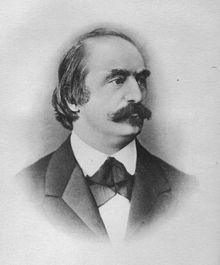 major composers, but Hanslick was so influential as a music critic that his impact on the development and public perception of music can be compared to that of a major composer’s. Hanslick was born in Prague, then part of the Austro-Hungarian Empire, into a German-speaking family. His father was a small and rather poor landowner; his mother was Jewish, the daughter of a well-to-do merchant; she converted to Catholicism upon marrying Hanslick senior. Richard Wagner, who would become Hanslick’s nemesis, never forgot that by blood Hanslick was half-Jewish. In Prague, Hanslick studied music with Václav Tomášek, a noted composer and teacher. He didn’t pursue his music studies but went to the University of Vienna, graduating with a degree in law. Still, music was his love; even while at the university he continued studying it and writing an occasional review. While working in different ministries, Hanslick continued writing musical criticism, first for Wiener Zeiting, the oldest newspaper in the world that is still published today, and then for another major newspaper, Die Presse, which is also still in publication. When in 1864 two former editors of Die Presse started a new newspaper, Neue freie Presse, Hanslick joined them as a music critic and remained there for the rest of his career. In 1854, Hanslick wrote a book, On the Beautiful in Music, one of the arguments of which was that “Music means itself,” that it has no “subject” and is not an expression of feelings. Unfortunately, this rather conventional notion contradicted Wagner’s ideas. Just three years earlier, Wagner had published an essay, Opera and Drama, in which he, while describing “music drama” as the synthesis of music, poetry and spectacle, also maintained that his music expresses the feelings intrinsic to poetry and drama. This made “esthetic of feelings” quite popular in the German-speaking world, and Hanslick’s refutation created a torrent of responses, both positive and negative. The book earned Hanslick a position of professor of “History and esthetics of music” at the University of Vienna, the first such position at any European university. On the other hand, Wagner took umbrage and, in Die Meistersinger von Nürnberg, created a character of Beckmesser, a town clerk and singer, who maliciously judges Walther’s performance, as a caricature on Hanslick. And in his essay, “Judaism in Music,” Wagner declared that Hanslick’s “Jewish style” of criticism is anti-German.
major composers, but Hanslick was so influential as a music critic that his impact on the development and public perception of music can be compared to that of a major composer’s. Hanslick was born in Prague, then part of the Austro-Hungarian Empire, into a German-speaking family. His father was a small and rather poor landowner; his mother was Jewish, the daughter of a well-to-do merchant; she converted to Catholicism upon marrying Hanslick senior. Richard Wagner, who would become Hanslick’s nemesis, never forgot that by blood Hanslick was half-Jewish. In Prague, Hanslick studied music with Václav Tomášek, a noted composer and teacher. He didn’t pursue his music studies but went to the University of Vienna, graduating with a degree in law. Still, music was his love; even while at the university he continued studying it and writing an occasional review. While working in different ministries, Hanslick continued writing musical criticism, first for Wiener Zeiting, the oldest newspaper in the world that is still published today, and then for another major newspaper, Die Presse, which is also still in publication. When in 1864 two former editors of Die Presse started a new newspaper, Neue freie Presse, Hanslick joined them as a music critic and remained there for the rest of his career. In 1854, Hanslick wrote a book, On the Beautiful in Music, one of the arguments of which was that “Music means itself,” that it has no “subject” and is not an expression of feelings. Unfortunately, this rather conventional notion contradicted Wagner’s ideas. Just three years earlier, Wagner had published an essay, Opera and Drama, in which he, while describing “music drama” as the synthesis of music, poetry and spectacle, also maintained that his music expresses the feelings intrinsic to poetry and drama. This made “esthetic of feelings” quite popular in the German-speaking world, and Hanslick’s refutation created a torrent of responses, both positive and negative. The book earned Hanslick a position of professor of “History and esthetics of music” at the University of Vienna, the first such position at any European university. On the other hand, Wagner took umbrage and, in Die Meistersinger von Nürnberg, created a character of Beckmesser, a town clerk and singer, who maliciously judges Walther’s performance, as a caricature on Hanslick. And in his essay, “Judaism in Music,” Wagner declared that Hanslick’s “Jewish style” of criticism is anti-German.
While writing for Neue freie Presse, Hanslick became the leading music critic of Vienna, which itself was the foremost music center of Europe. He had rather conservative taste and wasn’t interested in music before Mozart. He felt that Beethoven had reached the pinnacle and that Schumann and Brahms were the main talents to follow him. Brahms became a close friend and Hanslick his major supporter and promoter. Hanslick tried to be objective toward Wagner’s music. He openly admired his virtuoso orchestration; he liked Tannhäuser and, surprisingly, Meistersinger, despite the “Beckmesser affair.” At the same time, he felt that the whole concept of “music drama” is detrimental to music development. Hanslick could be very cutting: “The Prelude to Tristan and Isolde reminds me of the old Italian painting of a martyr whose intestines are slowly unwound from his body on a reel.” Hanslick was also very negative toward Liszt and Bruckner, one composer who needed a lot of encouragement. These days Hanslick is remembered as a conservative who completely misunderstood the “new music” of Wagner and his followers. This is true, but we also should remember that he disliked some nativist, irrational aspects of Wagner’s (and Bruckner’s) music which the Nazis some decades later found so attractive.Permalink
September 4, 2017. Bruckner, Milhaud and more. Today is Labor Day, so we’ll be very brief. Anton Bruckner was born on this day in 1824. Nine years older than Brahms,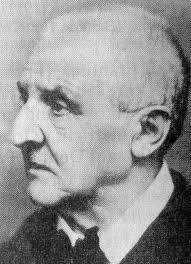 another great symphonist, today his music sounds more daring. Bruckner had many supporters and several powerful detractors, the most influential being Eduard Hanslick, the Viennese music critic who wrote devastating reviews. Here’s one quote from his article about Bruckner’s Third Symphony: "Neither were his [Bruckner's] poetic intentions clear to us – perhaps a vision of how Beethoven's Ninth made friends with Wagner's Valkyries and ended up under horse’s hooves – nor could we grasp the purely musical coherence." These reviews were especially painful to Bruickner as he was an unusually insecure composer. All of Bruckner’s symphonies are large in scale, and so are the three masses (Bruckner was a deeply religious person and church music played a very important part in his compositional output). His motets, though, are much smaller and are a better fit for this post. Here’s one, Os Justi Meditabitur (The mouth of the righteous utters wisdom). The Monteverdi Choir is conducted by John Eliot Gardiner.
another great symphonist, today his music sounds more daring. Bruckner had many supporters and several powerful detractors, the most influential being Eduard Hanslick, the Viennese music critic who wrote devastating reviews. Here’s one quote from his article about Bruckner’s Third Symphony: "Neither were his [Bruckner's] poetic intentions clear to us – perhaps a vision of how Beethoven's Ninth made friends with Wagner's Valkyries and ended up under horse’s hooves – nor could we grasp the purely musical coherence." These reviews were especially painful to Bruickner as he was an unusually insecure composer. All of Bruckner’s symphonies are large in scale, and so are the three masses (Bruckner was a deeply religious person and church music played a very important part in his compositional output). His motets, though, are much smaller and are a better fit for this post. Here’s one, Os Justi Meditabitur (The mouth of the righteous utters wisdom). The Monteverdi Choir is conducted by John Eliot Gardiner.
Darius Milhaud, a member of Les Six, was also born on this day, in 1892 in Aix-en-Provence into a Jewish family. He traveled extensively, absorbing influences from other cultures. In 1917, he went to Brazil and found inspiration in the local folk music and traditions of the Carnaval. In 1922, he traveled to the United States where for the first time he encountered authentic jazz, which made a huge impression on him. In 1940, after the Germans occupied part of France, Milhaud fled to the US. There he found a position at Mills College in Oakland, CA. One of his favorite students was Dave Brubeck. Here is Milhaud’s whimsical Ballade for Piano and Orchestra, op.61. Vlastimil Lejsek is on the Piano. Brno Philharmonic Orchestra is conducted by Jiří Waldhans.
Johann Christian Bach, Giacomo Meyerbeer, Amy Beach and John Cage were all born this week. We’ll be less perfunctory the next time.Permalink
August 28, 2017. Pachelbel and Locatelli. Before we turn to our birthday boys, two composers born in the 17th century, we’d like to mention a much younger musician. Yoo Jin Jang was born in 1990 in South Korea. After studying in her native country, she moved to the US. At the New England Conservatory, she studied with Miriam Fried and is currently pursuing her Doctorate at that school. Ms. Jang has won a number of competitions, among them the 2013 Munetsugu Violin Competition in Japan, for which she was loaned the 1697 “Rainville” Stradivari violin. In 2012 Ms. Jang founded the Kallaci String Quartet. She recently played a Dame Myra Hess concert in Chicago, and here’s her performance of a rarely-played Violin Sonata by Felix Mendelssohn. The sonata was never published during Mendelssohn’s time, then got lost and was discovered by Yehudi Menuhin only in 1953! Renana Gutman is on the piano. And as a little encore of sorts, here’s a Tango-Étude No. 3 for Solo Violin, again performed by Yoo Jin Jang.
school. Ms. Jang has won a number of competitions, among them the 2013 Munetsugu Violin Competition in Japan, for which she was loaned the 1697 “Rainville” Stradivari violin. In 2012 Ms. Jang founded the Kallaci String Quartet. She recently played a Dame Myra Hess concert in Chicago, and here’s her performance of a rarely-played Violin Sonata by Felix Mendelssohn. The sonata was never published during Mendelssohn’s time, then got lost and was discovered by Yehudi Menuhin only in 1953! Renana Gutman is on the piano. And as a little encore of sorts, here’s a Tango-Étude No. 3 for Solo Violin, again performed by Yoo Jin Jang.
Pietro Locatelli was also a violinist, and a pretty good one: he toured across Europe and his compositions, which we assume he could play well, present technical challenges even to modern violinists. Locatelli was born on September 3rd of 1695 in Bergamo. At the age of 14 he became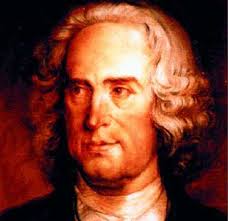 a member of the cappella musicale at the local church of Santa Maria Maggiore. In 1711, he went to Rome where he studied with students of Arcangelo Corelli and maybe even with the master himself. He came under the patronage of Camillo Cybo, a major-domo of the Pope Clement XI (Cybo, a great grandnephew of Pope Innocent X, was later elevated to Cardinal). Locatelli dedicated his Opus one, Twelve Concerti Grossi, to Cybo. He also became one of the favorite musicians of that famous patron of arts, Cardinal Pietro Ottoboni. Locatelli left Rome in 1723 and during the following five years traveled across Italy and Germany. He performed at major courts – in Berlin for the Prussian court, in Dresden for Augustus II of Saxony. Most of Locatelli’s compositions also come from this period. In 1727 Locatelli moved to Amsterdam, where he was to live for the rest of his life (he died on March 30th of 1764). There he played mostly for the rich music lovers and traded in violin strings. He composed very little. Here’s one violinist who wouldn't be stymied by Locatelli’s technical challenges: Leonid Kogan. He’s playing the Violin Sonata in F minor, op. 6 No. 7 "At the tomb." Andrej Mytnik is at the piano.
a member of the cappella musicale at the local church of Santa Maria Maggiore. In 1711, he went to Rome where he studied with students of Arcangelo Corelli and maybe even with the master himself. He came under the patronage of Camillo Cybo, a major-domo of the Pope Clement XI (Cybo, a great grandnephew of Pope Innocent X, was later elevated to Cardinal). Locatelli dedicated his Opus one, Twelve Concerti Grossi, to Cybo. He also became one of the favorite musicians of that famous patron of arts, Cardinal Pietro Ottoboni. Locatelli left Rome in 1723 and during the following five years traveled across Italy and Germany. He performed at major courts – in Berlin for the Prussian court, in Dresden for Augustus II of Saxony. Most of Locatelli’s compositions also come from this period. In 1727 Locatelli moved to Amsterdam, where he was to live for the rest of his life (he died on March 30th of 1764). There he played mostly for the rich music lovers and traded in violin strings. He composed very little. Here’s one violinist who wouldn't be stymied by Locatelli’s technical challenges: Leonid Kogan. He’s playing the Violin Sonata in F minor, op. 6 No. 7 "At the tomb." Andrej Mytnik is at the piano.
As we wrote in 2014, while celebrating Johann Pachelbel’s birthday, had he been alive, he would probably have been very upset with the enormous popularity of his Cannon in D. During his lifetime, Pachelbel, who was born on September 1st of 1653 in Nuremberg, Bavaria, was famous as composer and organist. He worked in Vienna as an organist at the St. Stephen’s Cathedral, in Eisenach as a court organist to the Duke of Saxe-Eisenach, and then in Erfurt, where he became close with many of the family of Bachs. Eventually he settled in Nuremberg, where in 1699 he composed one of his most important pieces,Hexachordum Apollinis. Here’s Aria Tertia from this collection. John Butt is on the organ.
PermalinkAugust 21, 2017. Debussy, Krenek and Stockhausen. We have a bit of a challenge: on the one hand, Debussy, one of the most popular composers ever, was born this week. On the other, this same week brings the anniversaries of two very significant composers, who strongly affected the development of 20th century Western music. The problem is that their music is challenging and with few exceptions not easy on the ear. These composers are Ernst Krenek and Karlheinz Stockhausen. As for Debussy: here’s something that’s performed not as often as the Préludes or Suite Bergamasque: the first act from his opera Pelléas & Mélisande. Pierre Boulez conducts the Royal Opera House Orchestra. With Donald McIntyre and Elisabeth Söderström. And now to things more adventuresome.
Ernst Krenek was born in Vienna on August 23rd of 1900. His father was Czech (“r” in Krenek was originally an ř, as in Dvořak and pronounced as “rzh”). He studied with Franz Schreker, who these days is almost forgotten but back in the early 20th century was the second most popular opera composer (after Richard Strauss). In 1920 Krenek moved to Berlin, met many musicians and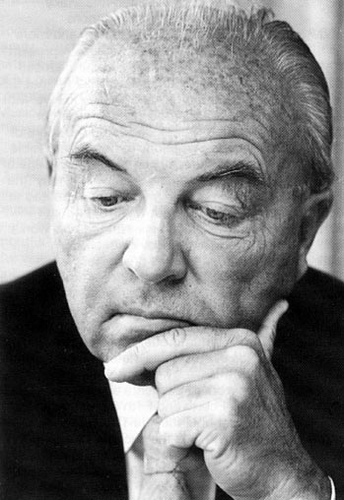 became part of a very active musical scene. In 1922, he met Alma Mahler and her daughter Anna. Alma introduced Krenek to Alban Berg, and Anna asked him to complete her father’s Tenth Symphony. Anna Mahler and Kreken got married in 1924 but the marriage lasted less than a year. In 1923 the premier of Krenek’s Second Symphony, which doesn’t sound too daring today, created an uproar. In the aftermath, Krenek moved to Switzerland, where he met Stravinsky (they had a contentious relationship). In 1925 Krenek went to Paris, where he became involved with the composers of Les Six; under their influence he decided that his music should be simpler. From the neo-Romantic period that followed come several operas, including Der Diktator based on the life of Mussolini. In 1927 Krenek wrote the opera Jonny spielt auf, about a black jazz violinist. Here’s an excerpt (A Hotel Room in Paris) from the recording made in 1964 with Lucia Popp, other soloists and the Vienna Volksoper Orchestra conducted by Heinrich Hollreiser. Jonny spielt auf was a tremendous success (even though it sounds somewhat dated now) and afforded Krenek financial freedom. Several years later the opera would be banned by the Nazis. Krenek moved to Vienna where he resumed his friendship with Berg and Webern. In Vienna, he wrote a 12-tone opera Karl V, but the German premier was cancelled by the Nazis. In March of 1938 Germany annexed Austria and shortly after Krenek emigrated to America. In the US, Krenek taught in several music schools; his longest tenure was at Hamline University, from 1942 to 1947. That year he moved to Los Angeles and later spent several summers teaching at Darmstadt. There, as it happened, he was eclipsed by the rising stars, Boulez and Stockhausen. Nevertheless, his interest in the 12-tone and serial music led to a large number of composition created in the mid-1950s and 1960s. He continued writing music till well into his 80s. In 1982, he was made an honorary citizen of Vienna. Krenek died in Palm Springs onDecember 22nd of 1991. Here is his Third Piano Sonata, from 1943. It’s performed by Glenn Gould.
became part of a very active musical scene. In 1922, he met Alma Mahler and her daughter Anna. Alma introduced Krenek to Alban Berg, and Anna asked him to complete her father’s Tenth Symphony. Anna Mahler and Kreken got married in 1924 but the marriage lasted less than a year. In 1923 the premier of Krenek’s Second Symphony, which doesn’t sound too daring today, created an uproar. In the aftermath, Krenek moved to Switzerland, where he met Stravinsky (they had a contentious relationship). In 1925 Krenek went to Paris, where he became involved with the composers of Les Six; under their influence he decided that his music should be simpler. From the neo-Romantic period that followed come several operas, including Der Diktator based on the life of Mussolini. In 1927 Krenek wrote the opera Jonny spielt auf, about a black jazz violinist. Here’s an excerpt (A Hotel Room in Paris) from the recording made in 1964 with Lucia Popp, other soloists and the Vienna Volksoper Orchestra conducted by Heinrich Hollreiser. Jonny spielt auf was a tremendous success (even though it sounds somewhat dated now) and afforded Krenek financial freedom. Several years later the opera would be banned by the Nazis. Krenek moved to Vienna where he resumed his friendship with Berg and Webern. In Vienna, he wrote a 12-tone opera Karl V, but the German premier was cancelled by the Nazis. In March of 1938 Germany annexed Austria and shortly after Krenek emigrated to America. In the US, Krenek taught in several music schools; his longest tenure was at Hamline University, from 1942 to 1947. That year he moved to Los Angeles and later spent several summers teaching at Darmstadt. There, as it happened, he was eclipsed by the rising stars, Boulez and Stockhausen. Nevertheless, his interest in the 12-tone and serial music led to a large number of composition created in the mid-1950s and 1960s. He continued writing music till well into his 80s. In 1982, he was made an honorary citizen of Vienna. Krenek died in Palm Springs onDecember 22nd of 1991. Here is his Third Piano Sonata, from 1943. It’s performed by Glenn Gould.
Karlheinz Stockhausen, one of the most important German composers of the second half of the 20th century, was born on August 22nd of 1928. He deserves a full entry and we’ll do it another time. Here’s just a taste: Klavierstück IX, performed by Pierre-Laurent Aimard.Permalink
August 14 2017. Ibert, Porpora, Enescu. The French composer Jacques Ibert was born in Paris on August 15th of 1890. His father was a successful trader and his mother an amateur pianist who studied with the Conservatory professors. Jacques started studying the violin at the age of four and later took piano lessons. In his youth, he supported himself as an accompanist and a cinema pianist. He took several courses at the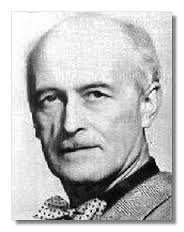 Paris Conservatory and attended private classes with André Gedalge, a teacher and composer. There he met Arthur Honegger and Darius Milhaud, two young composers who would later, together with Poulenc, Auric, Durey and Tailleferre form a group called Les Six. Ibert never joined in as during those years he stayed mostly away from Paris: during the Great War, he was a naval officer and then, returning to Paris, he won the Prix de Rome on his first attempt and went to Italy. This was a remarkable achievement considering that Ibert was absent from practically any music studies for almost four war years. The first concert of Ibert’s works, in 1922, was conducted by Gabriel Pierné (his birthday is also this week, on August 16th; he was born in 1863). In 1937, he was made the director of the Académie de France at the Villa Medici, a position he held till 1960. Ibert died in Paris on February 5th of 1962. Here’s Ibert’s Flute Concerto, with Emmanuel Pahud as the soloist.
Paris Conservatory and attended private classes with André Gedalge, a teacher and composer. There he met Arthur Honegger and Darius Milhaud, two young composers who would later, together with Poulenc, Auric, Durey and Tailleferre form a group called Les Six. Ibert never joined in as during those years he stayed mostly away from Paris: during the Great War, he was a naval officer and then, returning to Paris, he won the Prix de Rome on his first attempt and went to Italy. This was a remarkable achievement considering that Ibert was absent from practically any music studies for almost four war years. The first concert of Ibert’s works, in 1922, was conducted by Gabriel Pierné (his birthday is also this week, on August 16th; he was born in 1863). In 1937, he was made the director of the Académie de France at the Villa Medici, a position he held till 1960. Ibert died in Paris on February 5th of 1962. Here’s Ibert’s Flute Concerto, with Emmanuel Pahud as the soloist.
Nicola Porpora was born on August 17th of 1686. Last year, on Porpora’s 330th anniversary, we posted a detailed entry about this wonderful composer and music teacher (here), so today we’ll just play the aria Sì pietoso il tuo labbro ragiona from his opera Semiramide riconosciuta. In the opera, this aria is sung by Merteo, an Egyptian prince, brother of Semiramide. At the premier this role was performed by the great soprano castrato (and Porpora’s student) Carlo Maria Broschi, better known as Farinelli. Here it is sung by the Swedish mezzo-soprano Ann Hallenberg; Christophe Rousset conducts the ensemble Les Talens Lyriques. The music is wonderful and makes one wonder why Porpora’s operas aren’t staged more often.
George Enescu’s birthday is also this week, on August 19th. Enescu was born in a small village (later renamed in his honor into “George Enescu”) in Moldavia, a historical province of Romania. A child prodigy, he started composing at the age of five. At the age of seven, he was admitted to the Vienna Conservatory, the youngest person ever. There he studied the violin, the piano and composition. At the age of 10 he was presented to the court and played to the Emperor Franz Joseph. At the age of 13 he moved to Paris and went to the Paris Conservatory where he studied with André Gedalge, whom we mentioned above as a teacher of Jacques Ibert (Gedalge also taught Ravel, Honegger and many other soon to be famous composers). Like Bartók who was influenced by the folk music of Hungary and Romania, Enescu liberally borrow from the tunes of his native country. In 1901, at just twenty years old, he wrote two Romanian Rhapsodies, Op. 11, which remained his most popular compositions (quite to his chagrin, as he thought they overshadowed his more mature compositions). Enescu traveled to the US for the first time in 1923 and many times thereafter, performing as a conductor and a violinist. He lived mostly in Paris and Bucharest. During World War II he stayed in Romania, and made several recordings with the great pianist Dinu Lipatti. When the Soviets took over, he moved back to Paris. He got more involved in teaching the violin. Among his students were such future greats as Yehudi Menuhin, Ivry Gitlis, Arthur Grumiaux, and Ida Haendel. Menuhin said that Enescu was "the most extraordinary human being, the greatest musician and the most formative influence" he had ever experienced. Here’s is his Romanian Rhapsody No. 2, Op. 11. Iosif Conta conducts the National Radio Orchestra of Romania.
Permalink